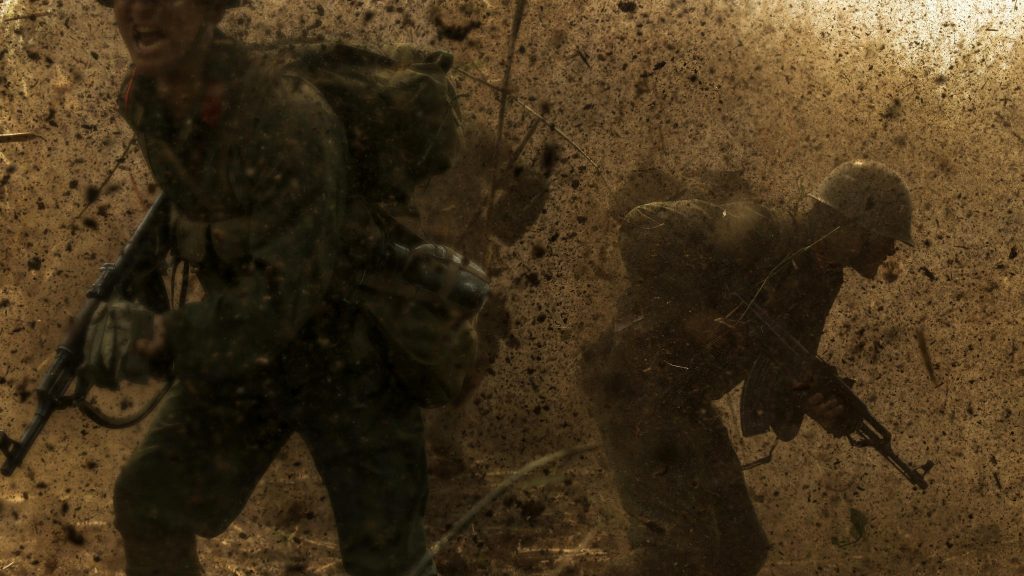When announcing Youth, during the opening screening of Five Flavours, president of the festival, Jakub Królikowski adverted the viewers not to be discouraged by the alleged propaganda layer of the film, under which one will find much more. Anyway, the director himself, Feng Xiaogang, reportedly strongly refutes allegations of propaganda. The situation is actually a little more complicated. The answer to the question about the presence of propaganda will sound like a Schrodinger’s Conundrum: it is and is not there.
The theme and temporality of Chinese megaproduction, no matter if one wants it or not, force us to read the heroes’ past rather positively. This is the beginning of the film – the ’70s, Cultural Revolution, the time just before Mao Zedong’s death – appears quite idyllic. Attention is evenly distributed among teenage members of a soldier’s revolutionary artistic group (you can say it is a collective hero), among which there are a lot of youthful carefree. The problems of young people are rather simple –first love, creation of a hierarchy based on teasing the weaker, plans for the future verified later by reality (authoritarian agency of commanders’ orders, specificity of a disciplined society). Yes, there is talk about a economic crisis, and meals other than dumplings are rarities, but a positive image of this period combined with intelligent dosing of sentiment imprints a naive-sweet trace until the end of the film.
The death of Mao Zedong and covering his idealized portrait with a black veil, means not only the symbolic end of an era in Chinese history, but also the moment when mild youthful problems are superseded by forced by political and social change and war (Chinese-Vietnam War) adulthood. The long exposure of idyll corresponds with the structure of the memory. The past is inevitably lost, and for heroes it remains as an idealized image covered with a veil of memory. That’s how brutal initiation works in the end. Once lost, youth and peace cannot be recovered.
The way Xiaogang shows war differs from, for example, the American images of the conflicts in Vietnam, placing himself at the same time close – in terms of naturalistic chaos, the threat of tall grasses and the danger of ambushes – and far away to them. The director avoids showing the enemy by focusing on the inner experiences of the generation. As if the memory was a real opponent, and the innocence was at stake.
The last part of Youth, i.e. narrating the 1990s, is another verification of the lives of heroes, a look at their aged faces and the conditions of a completely new society, which does not completely remember them (e.g. a scene in the Public Security Bureau).
By using propaganda-like means, the Chinese director does not conduct political agitation. He uses colorful and monumental aesthetics, paying respects for lost youth – and precisely the youth is the object of propaganda. In this sense, Youth is an universal film, although plastic aesthetics corresponding to the naivety of growing up will not appeal to everyone, and the limping poetry present in the narrative (although close to that of life) will be amusing to many viewers. One can feel the amount of money put into the film. If someone wants a Chinese, monumental, generational story about the passage of time dressed in slightly discolored robes, then Youth will be a good choice.







